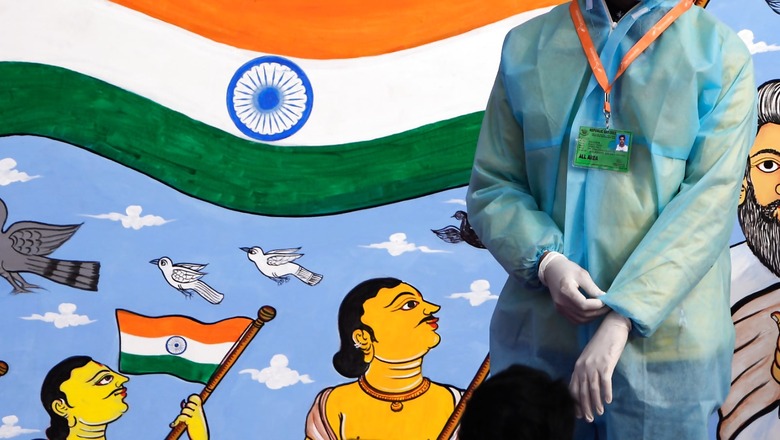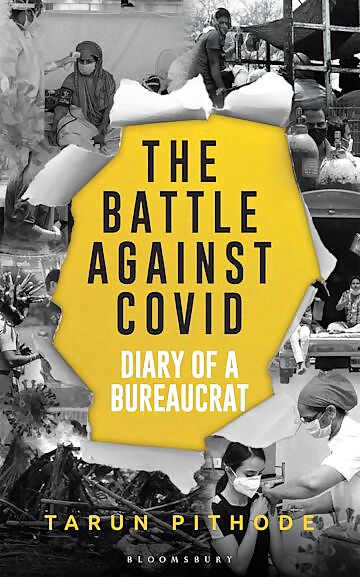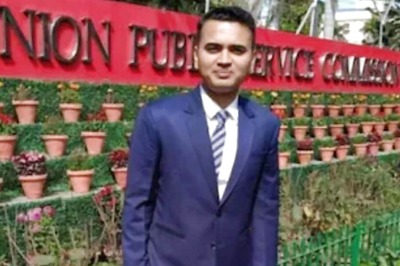
views
In March 2020, after watching the presentation made by the Jabalpur district administration, my team, which comprised Mr Irshad Wali (deputy inspector general of police), Mr Vijay Datta (commissioner, Bhopal Municipal Corporation), Mr Satish S. (additional district magistrate), Mr Dharamveer Yadav (superintendent of police) and Mr Sandesh Jain (assistant superintendent of police), realised that we would be expected to make a similar PowerPoint presentation to demonstrate our preparedness. The time we had in our hands before a case was reported in our city was uncertain and hence some panic and stress were but natural on our part. No positive case in our district as well as the lack of planning was manifesting as increased levels of stress at my end.
Promptly after the presentation, we assembled in the new police control room. The stress on my face was evident and Vijay and Satish assured me that they would devise a better plan than the one prepared by the district magistrate of Jabalpur within an hour. Vijay asked me to relax and list down the activities and resources required for this uphill task. Then Vijay and Satish went into another room and didn’t appear until they had something substantial to show me; in the meantime, we were having dinner in another room. While Vijay and Satish were still drafting a plan, the police team led by the deputy inspector general of police (DIG) made their plan to enforce the lockdown announced by the central government. They finally came to us at around 1 am and showed us the plan. We discussed the draft in detail and finalised it after much deliberation.
Based on the requirement, tasks were delineated clearly and responsibilities assigned to officers. Orders were issued the very next day to set the plan rolling. Vijay lent me great support in terms of thinking and conceptualising the ideas we generated to manage the multifarious problems of the district. We changed officers to suit the work but the delegation chart remained the same and the work never suffered; in fact, every new entrant supplemented the framework of execution impeccably.
ALSO READ | From Fear and Disbelief, We Are Now Ready for Peaceful Coexistence with COVID
While all the officers were assigned specific tasks, I still felt we were missing something but I was unable to point out what it was. Finally, I realised what it was during a discussion with a senior officer. After listening to me, he suggested that I should include a few more dynamic and energetic officers in my team as the situation with this pandemic would only get worse by the day, considering the trends worldwide and in India. I requested the government for more officers of the rank of additional and deputy collectors right away and luckily I got all of them. There could not have been a better response from the government to help deal with a problem of such magnitude. In fact, I was given an earful for not asking for them earlier to manage the crisis.
We now decided to temporarily shift the collector’s office to the Smart City Office and made it our command centre for establishing emergency response systems like a dedicated call centre, telemedicine services and other required tasks. There was enough space for everyone to work, computers were readily available and all the basic amenities required were available in one single building, which was needed during that time.
In this control centre, there was limited access for outsiders, yet the number of people, who were a part of the workforce managing the crisis, coming to the smart city office, was almost 1,000 a day. It was a lot and we needed to reduce this in the wake of the risk of exposure to everybody working there. It was a necessity to supply essentials to the city and to send survey, screening and sampling teams to conduct fieldwork but considering the positive cases and the number of people visiting our office, we decided to regulate the movement of the people visiting the premises and decentralised most of the activities of the various departments engaged in COVID-19 duties. It led to a gradual reduction of staff to about 200.
ALSO READ | Another Year, Another Wave: 10 Tips from a Top Scientist on How to Live with COVID in 2022
We set up three control rooms in total, one each in the district government hospital, district police headquarters and the smart city office to get various tasks executed. All these control rooms—apart from the other work assigned to them—were responsible for making calls to the number of positive cases every morning to fetch the ‘first-contact’ details and follow up with them.
Though it was the epidemiologist’s task to connect to the positive patients and trace their contacts, this work was being done by three agencies, principally under one of the additional district magistrates (ADM). For executing this task, training was imparted to a dedicated staff from the health department but the police and revenue officers were also assisting the task.

This excerpt from The Battle against Covid: Diary of a Bureaucrat by Tarun Pithode has been published with the permission of Bloomsbury India
Read all the Latest Opinion News and Breaking News here

















Comments
0 comment